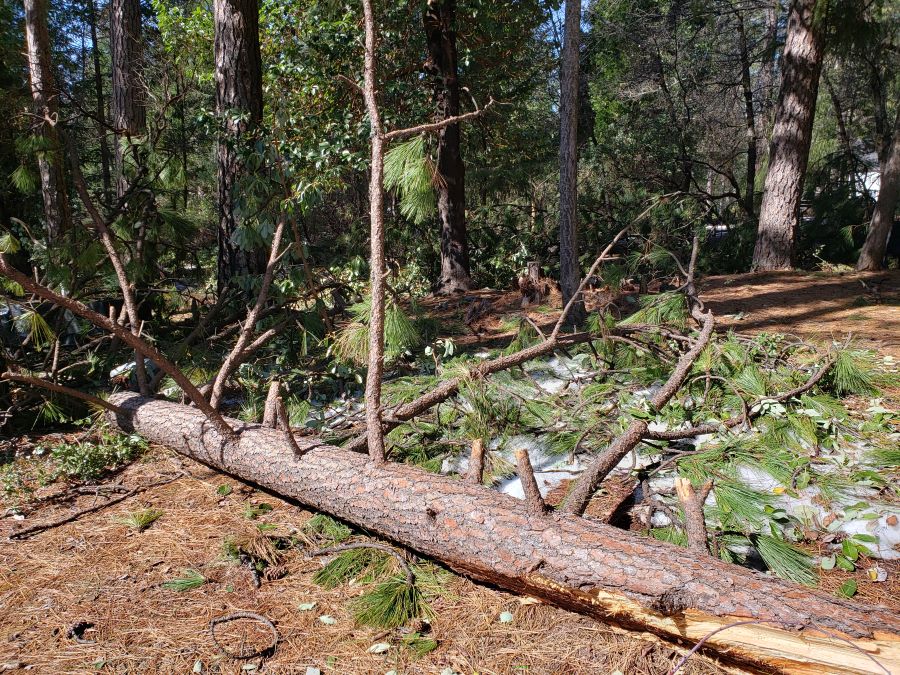The snow storms we’ve had in Nevada County last winter and this one, in 2023, have done devastating damage to trees and properties. Clean up will be a long, long process.
Part of the clean-up process
Safety is first. Remove all the broken and loose branches as soon as possible to eliminate the chance of injury to people and property. If damage is out of easy reach, have a tree care professional take care of it for you.
Trees that have snapped off should be removed. It’s not necessary to remove them immediately if you can’t. It will take a few years for them to become fire hazards. Cutting them down would be better, and leaving trunks on the ground is ok for a couple of years.
Branches that did not break under the weight of snow but were bent over may have internal cracks or other hidden damage, especially if they haven’t returned to their usual upright positions once the snow is gone. These branches may become hazards in the future and should be considered for removal.
Make proper cuts to remove limbs or branches
Make your cuts so that the trunk wood is left intact. Read how to best cut branches to maintain good tree health and safety. And read the part about not topping trees!
If you find a branch or a trunk that was partially stripped of its bark when an attached branch pulled away, it should be removed if more than a third of its circumference is lost. These branches or trees will become serious hazards if they are allowed to remain and grow larger.
Cut and smooth ragged edges of torn bark. This gives invading insects fewer places to hide. Do not expose any more of the cambium below. Read Should you Use pruning Seal? To know what not to do next.

